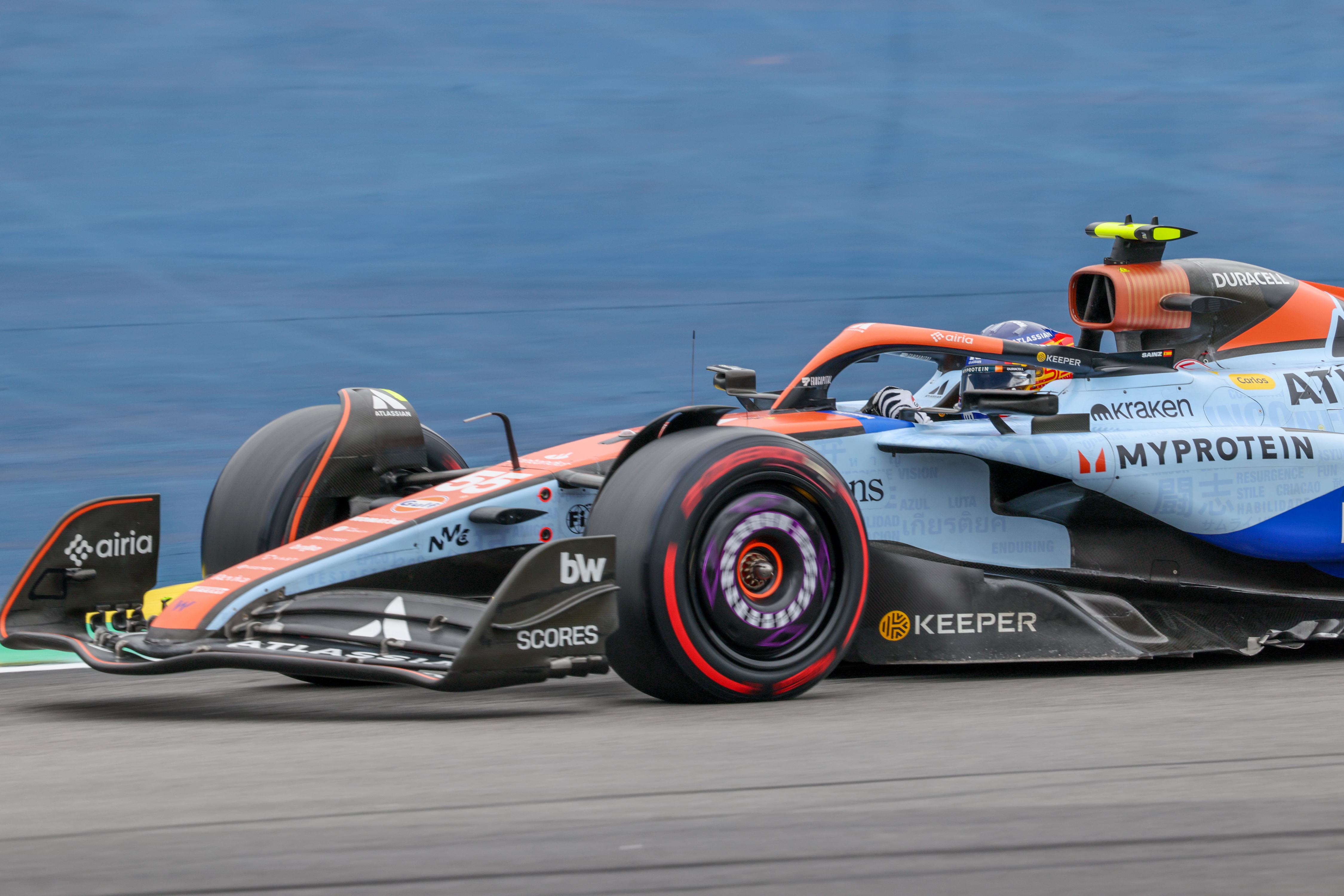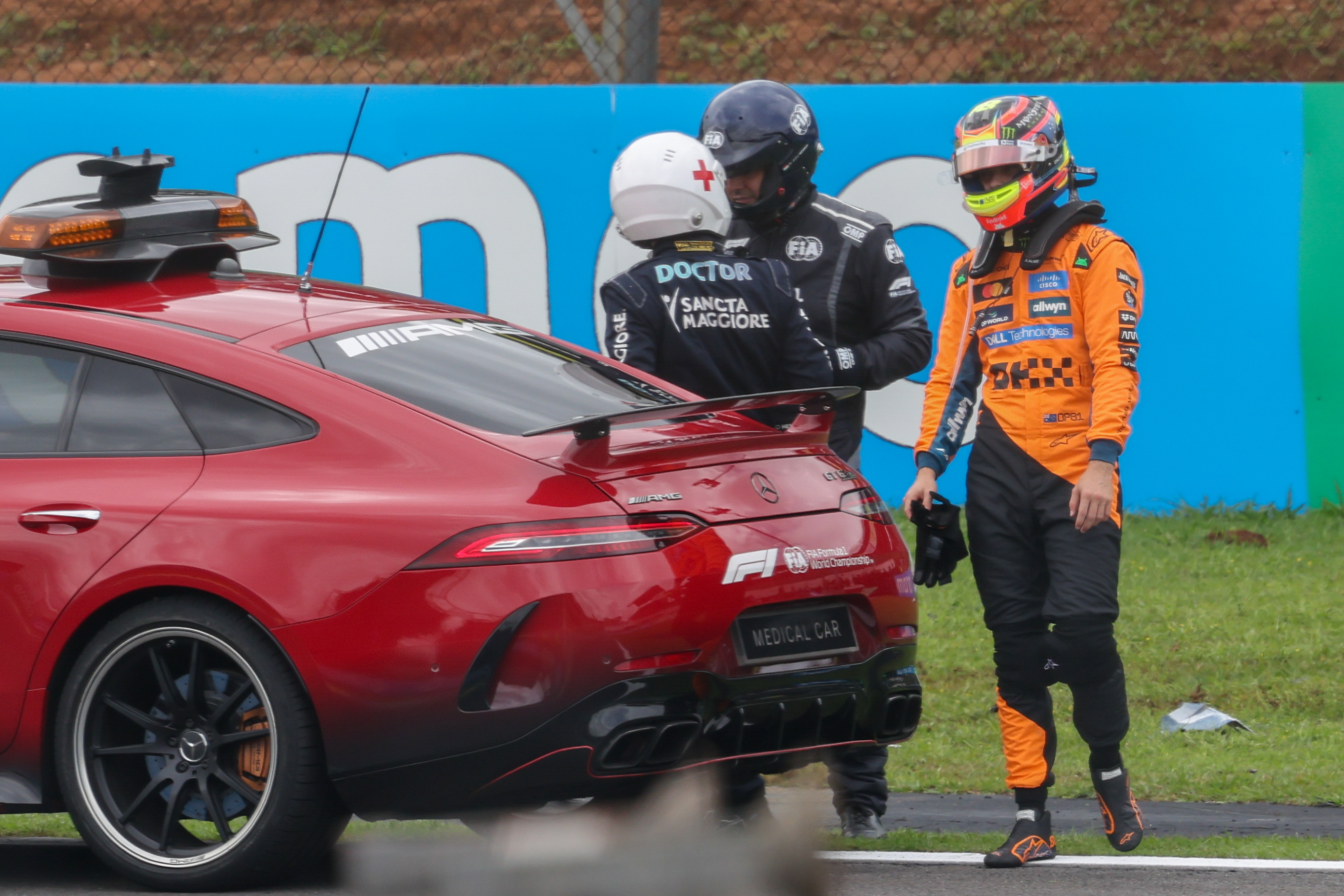Max really is that good
Filled with passionate fans, the racetrack between the lakes is a favorite.
He might not win the championship this year but Max Verstappen put on one heck of a drive in Brazil. Credit: Alessio Morgese/NurPhoto via Getty Images
He might not win the championship this year but Max Verstappen put on one heck of a drive in Brazil. Credit: Alessio Morgese/NurPhoto via Getty Images
After a weekend off, perhaps spent trick or treating, Formula 1’s drivers, engineers, and mechanics made their yearly trip to the Interlagos track for the Brazilian Grand Prix. More formally called the Autodromo Jose Carlos Pace, it’s definitely one of the more old-school circuits that F1 visits—and invariably one of the more dramatic.
For one thing, it’s anything but billiard-smooth.…
Max really is that good
Filled with passionate fans, the racetrack between the lakes is a favorite.
He might not win the championship this year but Max Verstappen put on one heck of a drive in Brazil. Credit: Alessio Morgese/NurPhoto via Getty Images
He might not win the championship this year but Max Verstappen put on one heck of a drive in Brazil. Credit: Alessio Morgese/NurPhoto via Getty Images
After a weekend off, perhaps spent trick or treating, Formula 1’s drivers, engineers, and mechanics made their yearly trip to the Interlagos track for the Brazilian Grand Prix. More formally called the Autodromo Jose Carlos Pace, it’s definitely one of the more old-school circuits that F1 visits—and invariably one of the more dramatic.
For one thing, it’s anything but billiard-smooth. Better yet, there’s elevation—lots of it—and cambers, too. Unlike most F1 tracks, it runs counterclockwise, and it combines some very fast sections with several rather technical corners that can catch out even the best drivers in the world. Nestled between a couple of lakes in São Paulo, weather is also a regular factor in races here. And indeed, a severe weather warning was issued in the lead-up to this weekend’s race.
You have to hit the ground running
This was another sprint weekend, which means that instead of two practice sessions on Friday and another on Saturday morning, the teams get one on Friday, then go into qualifying for the Saturday sprint race. The shortened testing time tends to shake things up a bit, and we definitely saw that this weekend.
When we left Mexico, there was only a point’s difference between McLaren drivers Lando Norris and Oscar Piastri in the championship. After a strong run in the middle of the season, when he led the championship and seemed to have the edge on Norris, Piastri has had a string of disappointing races. By recent standards, Brazil wasn’t quite so bad, but it wasn’t great, either.

Is it just me, or does Williams usually have a disappointing weekend when it does a Gulf Oil livery? Credit: Alessio Morgese/NurPhoto via Getty Images
Despite the weather warnings, none of the sessions required treaded tires. While the track surface was basically dry for the sprint race, the same couldn’t be said for the painted curbs—water had collected in the valleys between the stepped “teeth,” and as just about every racer knows, if the painted bits of the track are wet, you really don’t want to go near them if you have slick tires.
Sadly, Piastri demonstrated that to brutal effect as he began to get bolder with his lines. Perhaps he just used too much curb, or maybe the underbody of Norris’ car, a couple of places ahead in the lead, had sucked more water onto the track. Either way, the result was the same: A snap of oversteer pitched him into the opposite barrier with a thump. And with that, he gave away eight more points to Norris, who cruised home to win the sprint.
Qualifying threw more cats among more pigeons, notably with Max Verstappen’s exit in Q1. It’s not the first time the four-time world champion has been among the first few drivers eliminated in qualifying, but it is the first time it happened without some external factor, like a crash. Verstappen had tried a setup used by his teammate and found it lacking, getting no higher than 16th. Rather than start the race there in a car with a compromised setup, Red Bull elected to start him from the pit lane after changing in a fresh engine and a better setup.
Norris, not content with the sprint pole and win, also took pole position for the main event, ahead of Mercedes’ youngster Kimi Antonelli and Ferrari’s Charles Leclerc. Piastri lined up fourth.
Race day
Turn 1 at Interlagos is particularly dramatic. It’s a steep downhill left, after a very heavy braking zone following the flat-out run from Juncao (also known as turn 12). It’s possible to take more than one line through there, but three cars fighting for the same bit of road rarely works out, and as Norris led everyone away, behind him was Leclerc on the outside and Paistri on the inside, with Antonelli in between.
Antonelli and Piastri could have given each other a little more room, but they didn’t. They made contact, pitching the Mercedes into the Ferrari to its right. This broke Leclerc’s suspension, tore the tire off its rim, and ended his day. Antonelli and Piastri recovered, and the stewards decided that what most of us considered a racing incident was actually Piastri’s fault and awarded the Australian McLaren driver a 10-second penalty. In the end, fifth was the best he could do.

Cheer up, Oscar, it gets better. Credit: Alessio Morgese/NurPhoto via Getty Images
I’m far from the first person to say this, but F1’s officiating is getting way too hidebound. The sport has driving standard “guidelines,” not “rules,” but lately, the race stewards have been treating them like the latter and applying harsh penalties with little room for nuance. Worse yet, the way they treat who gets priority for a corner now practically encourages dive-bombing your opponent to get your wheels ahead of theirs before the apex, at which point you can apparently barge them off scott-free. But I digress.
On the eve of the race, plenty of people were ready to write off Max Verstappen’s title run. Still in third place, 36 points behind Norris, a pit lane start would surely leave the Dutch driver with little chance of closing in on the two McLaren men.
A pit stop following a puncture on lap 7 seemed to confirm that. But no. Having started on hard tires, which were far from optimum that day, he had made it to 13th place before carbon fiber debris from Antonelli’s car punctured his front left.
The pit stop to replace them with a new set of mediums left him dead last—and apparently energized. What followed was one of the finest recovery drives the sport has seen in decades, with Verstappen climbing from 18th to 4th in just 14 laps. By lap 51, he was in the lead, briefly, although only by dint of Norris’ second pit stop. In the end, he finished third, harassing Antonelli for the final few laps. Whether you’re a fan of his or not, there is no denying that this is what a generational talent looks like, even among a crop of extremely good F1 drivers.
Norris won the race by just over 10 seconds, adding another 25 points to Saturday’s eight, for a total of 390 with three races left to run. Piastri is still in second place but now sits more than a win behind Norris on 366 points. As for Verstappen, the 49-point deficit to Norris is a lot, but after yesterday’s drive, I’m not prepared to count him out.
Hard times
It was certainly a weekend to forget for Ferrari. While its sportscar team was clinching driver and manufacturer titles in Bahrain for the finale of the World Endurance Championship, its Brazilian GP was a double-bust. Leclerc retired on lap 1, and seven-time champion Lewis Hamilton followed him on lap 39, retiring a torrid-handling car that was the result of not one but two early collisions and yet another poor qualifying session.
And spare a thought for Gabriel Bortoleto, who made his home race debut. I’ve been very impressed with the young Brazilian, who won the Formula 2 title last year, but this was not a good weekend for him. A huge crash at the end of the sprint race—registering 57 Gs—meant his car wasn’t able to run in qualifying, and after starting from the pit lane, he was taken out at the beginning of the race after getting squeezed by Lance Stroll.
The sport takes another weekend off, then returns for the Las Vegas Grand Prix weekend starting November 20.
Jonathan is the Automotive Editor at Ars Technica. He has a BSc and PhD in Pharmacology. In 2014 he decided to indulge his lifelong passion for the car by leaving the National Human Genome Research Institute and launching Ars Technica’s automotive coverage. He lives in Washington, DC.